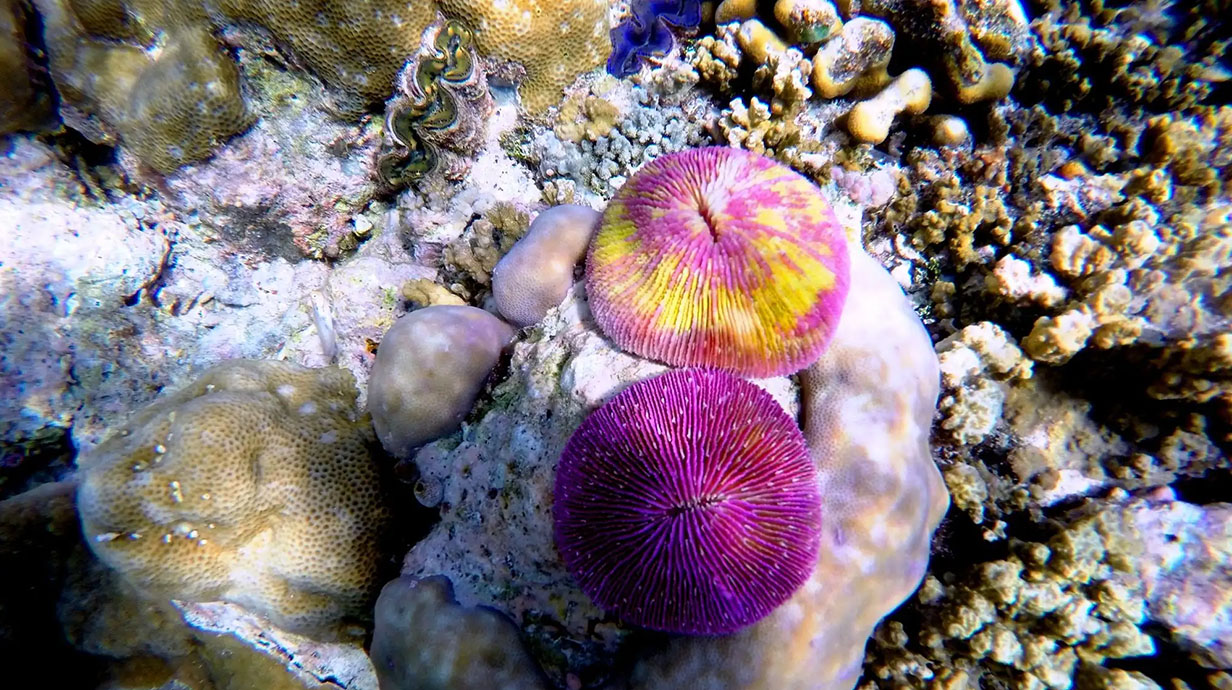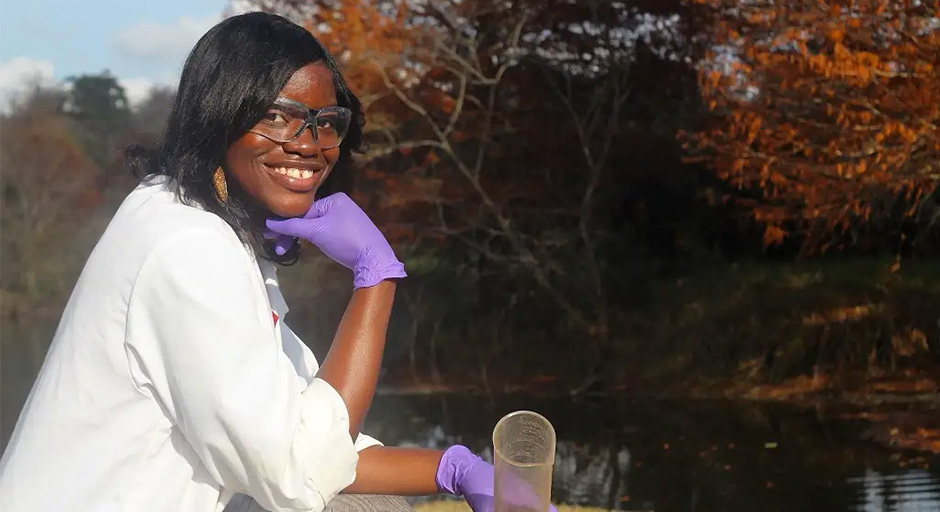Research & Resources in Biodiversity and Conservation Research
Our center supports the research efforts of faculty and students.

Resources for Students
Looking for an internship, jobs, or research opportunity in field biology, environmental and conservation sciences, wildlife management, fisheries, zoos, aquariums or national forests and national parks?
Internship & Employment Openings
The Natural Resources Job Board
Association of Zoos & Aquariums
U.S. Forest Service (Mississippi openings)
Society for Ecological Restoration
Diversity Joint Venture for Careers in Conservation
Undergraduate Student Research Opportunities
Work alongside Department of Biology researchers! Students can gain valuable research and training experience while assisting researchers in their labs and in the field.
Member & Affiliate Publications
Nguyen, T.M., Pombubpa, N., Huntemann, M., Clum, A., Foster, B., Foster, B., Roux, S., Palaniappan, K., Varghese, N., Mukherjee, S., Reddy, T.B.K., Daum, C., Copeland, A., Chen, I-M A., Ivanova, N.N., Kyrpides, N.C., Harmon-Smith, M., Eloe-Fadrosh, E.A., Pietrasiak, N., Stajich, J.E., & E.F.Y. Hom. (In Press).
Chen, I.-M. A., Ivanova, N. N., Kyrpides, N. C., Harmon-Smith, M., Eloe-Fadrosh, E. A., Pietrasiak, N., Stajich, J. E., & Hom, E. F. Y. (2024).
Zhao, M., Kurtis, S.M., Humbel, E.A, Griffith, E.V., Liu, T., Braun, E., Buchholz, R. & R.T. Kimball. (2024).
Did wattles and other bare parts evolve exclusively via sexual selection in Galliformes (chickens and allies)? Royal Society Open Science
Calatrava, V., Hom, E.F.Y., Guan, Q. Llamas, A., Fernandez, E. and A. Galvan. (2024).
Genetic Evidence for Algal Auxin Production in Chlamydomonas and Its Role in an Inter-Kingdom Mutualism with a Plant Growth-Promoting Bacterium. iScience, 27: 108762
Platt, B. F., & J. J. Smith. (2023).
Late Miocene paleoecology and paleoclimate in the central High Plains of North America reconstructed from paleopedological, ichnological, and stable isotope analyses of the Ogallala Formation in western Kansas, USA. Evolving Earth 1: 100019.
Jurburg, S. D., Hom, E. F. Y., & A. Chatzinotas. (2023).
Scott, R. C., Jr., and W. J. Resetarits, Jr. (2022).
Spatially explicit habitat selection: Testing contagion and the ideal free distribution with Culex mosquitoes. The American Naturalist.
Bohenek, J. R., M. R. Pintar, T. M. Breech & W. J. Resetarits, Jr. (2022).
A wolf in sheep’s clothing: predatory fish have convergent consumptive effects, but divergent predation-risk effects. Ecosphere 13(5):e4073
Resetarits, W.J., Jr., K.M. Potts, and R.C. Scott. (2022).
Resetarits, W.J., Jr. T.M. Breech, J.R. Bohenek, and M.R. Pintar. (2022).
Cue reduction or general cue masking do not underlie generalized chemical camouflage in pirate perch. Ecology. 103(4):e3625
Scott, R.C. Jr., M.R. Pintar, and W.J. Resetarits Jr. (2021).
Buchholz, R., Stamn, J. & S.A. Neha. (2021).
Can camera traps be used to measure climate change induced alterations of the activity patterns of elusive terrestrial vertebrates? Climate Change Ecology 2, 100020.
Hom, E.F.Y. & A.S. Penn (2021).
Symbiosis and the Anthropocene. Symbiosis 84:239-270
Pintar, M.R., J.R. Bohenek, and W.J. Resetarits, Jr. (2021).
Geographic variation in Culex oviposition habitat selection responses to a predator, Notonecta irrorata . Ecological Entomology, 46(5):1148-1156
Resetarits, W. J. Jr., M. R. Pintar, & J. R. Bohenek (2021).
Predator specific responses and emergent multi-predator effects on oviposition site choice in gray treefrogs, Hyla chrysoscelis. Proceedings of the Royal Society: B.
Resetarits, W. J. Jr., M. R. Pintar, & J. R. Bohenek (2021).
Complex multi-predator effects on demographic habitat selection and community assembly in colonizing insects. Ecological Monographs, 91(4):e01474
Goulet, T. & Goulet, D. (2021).
Resetarits, W. J. Jr. (2021).
Between a rock and a hard place: ovipositing treefrogs navigate complex tradeoffs in the landscape of patch quality. Ecosphere, 12(5):e03524
Barnett, Z.C & Adams, S. (2021).
Review of dam effects on native and invasive crayfishes illustrate complex choices for conservation planning. Frontiers in Ecology and Evolution.
McNamara, S. C., Pintar, M.R. & Resetarits, W. J., Jr. (2021).
Temperature but not nutrient addition affects abundance and assemblage structure of colonizing aquatic insects. Ecology, 102, e03209
Kaup, M., Trull, S. and Hom, E.F.Y. (2021).
On the move: Sloths and their symbionts as model mobile ecosystems. Biological Reviews. 96(6): 2638-2660
Holland, M.M. & Winkler, M. (2020).
Floristic changes in the understory vegetation of mixed temperate New England freshwater island forests over a period of 33 years. Plants (Basel) 9: 1600
Goulet, T.L., Erill, I., Ascunce, M. S., Finley, S.J., & Javan, G. T. (2020).
Conceptualization of the holobiont paradigm as it pertains to corals. Frontiers in Physiology
Pintar, M.R., & Resetarits, W. J., Jr. (2020).
Aquatic beetles influence colonization of disparate taxa in small lentic systems. Ecology and Evolution, 10: 12170-12182
Gaylord, M.K., Blades, E.L. & Parsons, G.R. (2020).
A hydrodynamics assessment of the hammerhead shark cephalofoil. Scientific Reports 10, 14495.
McCauley, M., Jackson, C. R., & Goulet, T. L. (2020).
Pintar, M.R. and W.J. Resetarits, Jr. (2020).
Aquatic beetles (Coleoptera) of the University of Mississippi Field Station, Lafayette County, Mississippi, USA. The Coleopterists Bulletin 74 (2).
Monette, V.D., Kelly, M.J. & Buchholz, R. (2020).
Human disturbance and the activity patterns and temporal overlap of tapirs and jaguars in reserves of NW Belize. Biotropica 52: 1262– 1274.
Fuller L., Stell E., Leary C. and Parsons, G. (2020).
Circulating adrenocorticotropic hormone levels, lactate levels, hematocrit and osmolality in relation to capture stress in Atlantic sharpnose sharks, Rhizoprionodon terraenovae . Comparative Biochemistry and physiology. Part A, Molecular & Integrative Physiology. 243:110655. DOI: 10.1016/j.cbpa.2020.110655.
Pintar, M.R. & W.J. Resetarits Jr. (2020).
A comparison of aquatic and semiaquatic Heteroptera (Hemiptera) inhabiting natural habitats and experimental mesocosms at the University of Mississippi Field Station. Aquatic Insects 41 (1): 76–84.
Stell, E., Hoover, J.J., Fuller, L. and Parsons, G.R. (2020).
Analyzing leap characteristics and water escape velocities of silver carp using in situ video analysis. North Am J Fish Manage, 40: 163-174. doi:10.1002/nafm.10388
Garrick, R.C., Dickinson III, T., Reppel, D.K., & Yi, R.N. (2019).
Two divergent genetic lineages within the Horned Passalus beetle, Odontotaenius disjunctus (Coleoptera: Passalidae), an emerging model for insect behavior, physiology and microbiome research. Insects, 10 (6): 159.
Resetarits, Jr, W.J., M.R. Pintar, J.R. Bohenek, & T.M. Breech. (2019).
Patch size as a niche dimension: aquatic insects behaviorally partition enemy-free space across gradients of patch size. The American Naturalist, 194 (6): 776–793.
Zachos LG, Platt BF. (2019).
Actuopaleoichnology of a modern Bay of Fundy macro-tidal flat: analogy with a Mississippian tidal flat deposit (Hartselle Sandstone) from Alabama. PeerJ 7:e6975 DOI 10.7717/peerj.6975
Clear, M.R. & Hom, E. F. Y. (2019).
The evolution of symbiotic plant-microbe signaling. Annual Plant Reviews Online 2:1-52. Annual Plant Reviews Online 2:1-52. DOI 10.1002/9781119312994.apr0684
Heppard, J.M. & Buchholz, R. (2019).
Impact of human disturbance on the thermoregulatory behavior of the endangered ringed sawback turtle (Graptemys oculifera). Aquatic Conservation: Marine and Freshwater Ecosystems, 10.1002/aqc.3106
Buchholz, R., Banusiewicz, J.D., Burgess, S., Crocker-Buta, S., Eveland, L., & Fuller, L. (2019).
Behavioural research priorities for the study of animal response to climate change. Animal Behaviour, 150: 127-137.
Fuller, L.N. & G.R. Parsons. (2019).
A note on associations observed between sharks and teleosts. Southeastern Naturalist, 18(3): 489-498.
Martin, T.H. & Buchholz, R. (2018).
Implications of male breeding-season home range movements for population monitoring and minimum reserve area of the Ocellated Turkey (Meleagris ocellata), a threatened Yucatán endemic. The Condor, 120: 815-827.
Visual Resources
Glenn Parsons Testimony
Dr. Glenn Parsons, founder of the Center for Biodiversity and Conservational Research, testifies before Congress on the Shark Fin Sales Elimination Act.
Expert Lectures
Experts from the Animal Behavior Conservation Committee lead instructional lectures on conservation behavior.
Biodiversity Photo Library
View our collection of photos taken in the field.

